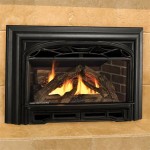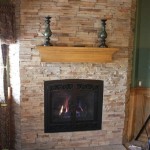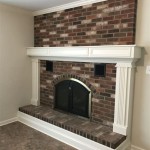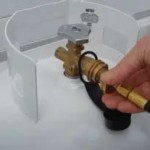Fireplace Accessories: The Essential Coal Bucket
A fireplace is often the focal point of a home, providing warmth and a sense of comfort during colder months. While the fireplace itself is a significant investment, the accompanying accessories are equally important in ensuring safe, efficient, and aesthetically pleasing operation. Among these accessories, the coal bucket stands out as a practical and often overlooked necessity for those who burn coal in their fireplace or stove. The purpose of this article is to illuminate the multifaceted role of the coal bucket, detailing its functionalities, various designs, crucial selection criteria, and essential maintenance practices.
Coal buckets, also known as coal hods, are specifically designed containers used for storing and transporting coal from a larger storage area to the fireplace. Their primary function is to provide a convenient and safe method for managing coal fuel. Without a dedicated vessel, handling coal can be messy, inefficient, and potentially dangerous. Attempting to carry coal in makeshift containers might lead to spills, creating a safety hazard and damaging flooring or surfaces. A coal bucket mitigates these risks by offering a secure and controlled method for transporting the fuel.
Beyond functionality, the coal bucket often contributes to the overall aesthetics of the fireplace setting. Many designs are available, ranging from traditional to contemporary, allowing homeowners to select a bucket that complements their existing décor. A well-chosen coal bucket can enhance the visual appeal of the fireplace, transforming a purely functional item into a decorative accent.
Functionality and Design Features
The core functionality of a coal bucket is to efficiently and safely move coal. This is achieved through a combination of design features that prioritize ease of use and secure containment. Key design considerations include capacity, shape, material, and handle design. Capacity is directly related to the size of the fireplace and the frequency of refueling. A larger fireplace will necessitate a larger bucket to minimize trips back and forth to the coal storage area. Conversely, a smaller fireplace may only require a smaller bucket, which is easier to manage and store.
The shape of the bucket is another critical aspect. Most coal buckets feature a wide opening at the top to facilitate easy filling and a narrow spout for controlled pouring. This design minimizes spillage and allows for precise placement of the coal within the firebox. The spout is particularly useful for reaching into the back of the fireplace without having to awkwardly maneuver the entire bucket. Some designs also incorporate a lid to further prevent spills and contain dust and debris, particularly useful for indoor storage.
Material selection is crucial for durability and longevity. Coal buckets are typically constructed from metal, with common choices including steel, wrought iron, and copper. Steel offers a good balance of strength and affordability, while wrought iron provides a more traditional and robust aesthetic. Copper, although more expensive, offers excellent corrosion resistance and a distinctive visual appeal. Some buckets may feature a combination of materials, such as a steel body with a brass or copper trim for decorative purposes.
The handle design is paramount for comfortable and safe handling. Handles are typically made of wood, metal, or a combination of both. Wooden handles provide a comfortable grip and insulate the hands from heat. Metal handles are more durable but can become hot during extended use. Ergonomic considerations are important in handle design, ensuring that the bucket can be easily carried and poured without straining the back or arms. Some buckets feature a secondary handle near the base, allowing for a more controlled pouring action.
Selection Criteria: Choosing the Right Coal Bucket
Selecting the right coal bucket involves careful consideration of several factors to ensure that it meets the specific needs and preferences of the homeowner. These factors include size and capacity, material and durability, style and aesthetics, and safety features. The size and capacity should be determined by the size of the fireplace and the frequency of use. A larger fireplace that is used frequently will require a larger bucket to minimize the number of trips to refill. A smaller fireplace that is used less often can be adequately served by a smaller, more manageable bucket.
Material and durability are critical considerations for longevity. A well-constructed coal bucket should be able to withstand the weight of the coal and the rigors of regular use. Steel and wrought iron are generally good choices for durability, while copper offers excellent corrosion resistance. It is important to inspect the construction quality of the bucket, paying attention to the thickness of the metal and the strength of the joints and welds. A poorly constructed bucket may be prone to dents, leaks, and other damage, reducing its lifespan and potentially creating a safety hazard.
Style and aesthetics are important for homeowners who want the coal bucket to complement their existing décor. Coal buckets are available in a wide range of styles, from traditional to contemporary. Traditional designs often feature ornate details and a rustic finish, while contemporary designs are typically more streamlined and minimalist. The choice of style should be guided by the overall aesthetic of the fireplace setting. Consider the color and texture of the fireplace surround, as well as the style of other accessories, such as the fire screen and andirons. A well-chosen coal bucket can seamlessly integrate into the existing décor, enhancing the overall visual appeal of the fireplace.
Safety features are paramount, and should not be overlooked. A secure lid is essential for preventing spills and containing dust and debris. A sturdy handle with a comfortable grip is also crucial for safe handling. Some buckets may feature additional safety features, such as a reinforced base to prevent tipping and a heat-resistant coating to protect the hands from burns. Before purchasing a coal bucket, carefully inspect it for any potential safety hazards, such as sharp edges or loose joints. A safe and well-designed coal bucket will provide years of reliable service and peace of mind.
Maintenance and Care
Proper maintenance and care are essential for extending the life of a coal bucket and ensuring its continued functionality. Regular cleaning, rust prevention, and proper storage are key aspects of maintaining a coal bucket in optimal condition. Cleaning should be performed regularly to remove coal dust, soot, and other debris. This can be accomplished with a brush, damp cloth, and mild detergent. Avoid using abrasive cleaners, as they can scratch or damage the finish of the bucket. After cleaning, be sure to thoroughly dry the bucket to prevent rust.
Rust prevention is particularly important for steel and wrought iron buckets. These materials are susceptible to rust if exposed to moisture. To prevent rust, apply a coat of protective oil or wax to the exterior of the bucket. This will create a barrier against moisture and help to keep the bucket in good condition. Inspect the bucket regularly for any signs of rust and address it promptly. Small spots of rust can be removed with a wire brush or steel wool, followed by a fresh coat of protective oil or wax.
Proper storage is also important for prolonging the life of a coal bucket. When not in use, store the bucket in a dry, well-ventilated area. Avoid storing the bucket in damp or humid conditions, as this can accelerate the rusting process. If the bucket has a lid, keep it closed to prevent dust and debris from accumulating inside. If storing the bucket outdoors, protect it from the elements with a waterproof cover.
In addition to routine maintenance, it is important to inspect the coal bucket regularly for any signs of damage. Check the handles for looseness or cracks, and examine the body of the bucket for dents or leaks. Address any damage promptly to prevent it from worsening. Loose handles can be tightened with screws or bolts, and small dents can often be repaired with a hammer and dolly. Leaks should be sealed with a waterproof sealant to prevent further corrosion. By following these simple maintenance tips, homeowners can ensure that their coal bucket remains in good condition for many years to come.

Fireplace Accessory Set Hand Made Black Copper Recycled Metal Companion Tool Coal Scuttle Bucket With Shovel And Matches Canister

Black Nested Coal Buckets Set Of 2

Ash Bucket Vintage Style 12 Litre Coal Fire Dark Grey With Lid Fireside Fireplace Wood

Fireside Fireplace Accessories Ash Coal Waterloo Bucket Fire Guard Dust Pan

Fireside Black Coal Scuttle Hod Fireplace Storage Accessory Carry Bucket

Antique Copper Coal Scuttle Hemet Log Bucket Fireplace Accessories Plant Pot Shabby Chic Vintage Laundry

Traditional Fireplace 5pcs Fireside Companion Set Kindling Bucket And Coal Canister Diy At B Q

Private Brand Unbranded Coal Hod 51095 The Home Depot

Style Selections Steel Fireplace Tool Set In The Tools Department At Com

Coal Scuttle Lee Valley Tools








